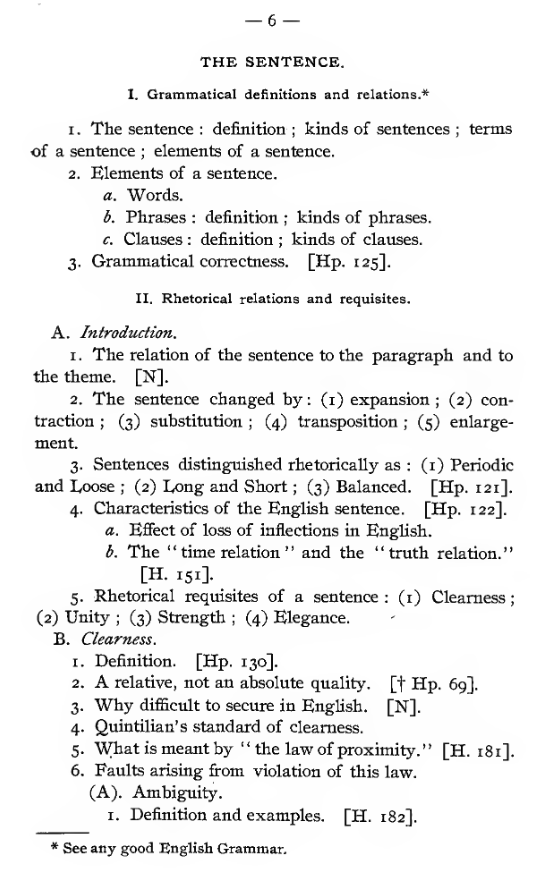 According to the Nation’s Report Card, only 27 percent of 8th graders attain proficiency in writing. But no problem, right? They’re just leaving middle school. Give them a few years under the instruction of high school English instructors and all will be well.
According to the Nation’s Report Card, only 27 percent of 8th graders attain proficiency in writing. But no problem, right? They’re just leaving middle school. Give them a few years under the instruction of high school English instructors and all will be well.
That seems to be wishful thinking, for the Nation’s Report Card shows that writing proficiency is still 27 percent by the time students head to college. Unfortunately, college doesn’t improve the writing woes of American students either. As writing expert John Maguire explains in The Washington Post:
“The failure of many of today’s college students to write decently, even after years of instruction, became headline news not long ago when a well-researched study of college student learning was published as a book under the title “Academically Adrift: Limited Learning on College Campuses.” Its authors, Richard Arum and Josipa Roksa, found that 45 percent of 2,300 students at 24 colleges showed no significant improvement in critical thinking, complex reasoning and writing by the end of their sophomore years. …
Millions of young men and women sit in freshman composition classrooms each fall semester, but if the Arum report is right, nearly half will write just as badly in their junior years as when they started college.”
Maguire goes on to ask:
“Why aren’t they learning? There are multiple causes. One is that schools admit students who can’t write and then pack them into comp courses taught by adjuncts. But the main problem, I think, is that the colleges are not really trying to teach students to write clear sentences. Not anymore. First-semester writing courses now cover rhetorical strategies, research, awareness of audience, youth civic activism — everything except the production of clear sentences.”
Curious about Macguire’s statement that colleges no longer teach students the basics of writing, I dug around for freshman English syllabi from past and present. The following description comes from a present-day First-Year Writing Seminar syllabus at Cornell University:

 While the description does hint that some instruction in foundational writing techniques is present, the overall tone conveys the loftier, higher-level approach to writing that Maguire insists is the norm on today’s campuses.
While the description does hint that some instruction in foundational writing techniques is present, the overall tone conveys the loftier, higher-level approach to writing that Maguire insists is the norm on today’s campuses.
An 1886 freshman composition syllabus from Cornell University takes a completely different approach, however. Instead of focusing on audience, or proper citation formatting, or whether a paper has drawn from a wide enough variety of sources, a majority of the class focuses on the basics. Thus, how to craft a clear, unified, and interesting sentence takes center stage. After learning about proper sentence structure, 1886 students moved on to the proper construction of a paragraph. From there, students learned how to choose a subject and appropriate language to support it. These basic building blocks of writing instruction take up most of the 20-page syllabus, a sample of which is shown below:
 Macguire concludes his Washington Post piece by saying:
Macguire concludes his Washington Post piece by saying:
“Colleges should teach the important writing behaviors first, one at a time, in sequence. They should offer new writing courses that assume students know nothing about sentences and train new sentence behaviors from the ground up.”
If the 1886 syllabus is any indication, such advice isn’t new. Given this revelation, one can’t help but wonder how many of today’s education woes might find a solution by simply looking to the past and rediscovering the tried and true methods recent generations have rejected.
Written by Annie Holmquist and published by Intellectual Takeout ~ April 28, 2017.
 ~ The Author ~
~ The Author ~
Annie is a senior writer with Intellectual Takeout. In her role, she assists with website content production and social media messaging.
Annie received a B.A. in Biblical Studies from the University of Northwestern-St. Paul. She also brings 20+ years of experience as a music educator and a volunteer teacher – particularly with inner city children – to the table in her research and writing.
In her spare time Annie enjoys the outdoors, gardening, reading, and events with family and friends.
 FAIR USE NOTICE: This site contains copyrighted material the use of which has not always been specifically authorized by the copyright owner. We are making such material available in our efforts to advance understanding of environmental, political, human rights, economic, democracy, scientific, and social justice issues, etc. We believe this constitutes a ‘fair use’ of any such copyrighted material as provided for in section 107 of the US Copyright Law. In accordance with Title 17 U. S. C. Section 107, the material on this site is distributed without profit to those who have expressed a prior interest in receiving the included information for research and educational purposes. For more information go to: http://www.law.cornell.edu/uscode/17/107.shtml
FAIR USE NOTICE: This site contains copyrighted material the use of which has not always been specifically authorized by the copyright owner. We are making such material available in our efforts to advance understanding of environmental, political, human rights, economic, democracy, scientific, and social justice issues, etc. We believe this constitutes a ‘fair use’ of any such copyrighted material as provided for in section 107 of the US Copyright Law. In accordance with Title 17 U. S. C. Section 107, the material on this site is distributed without profit to those who have expressed a prior interest in receiving the included information for research and educational purposes. For more information go to: http://www.law.cornell.edu/uscode/17/107.shtml
